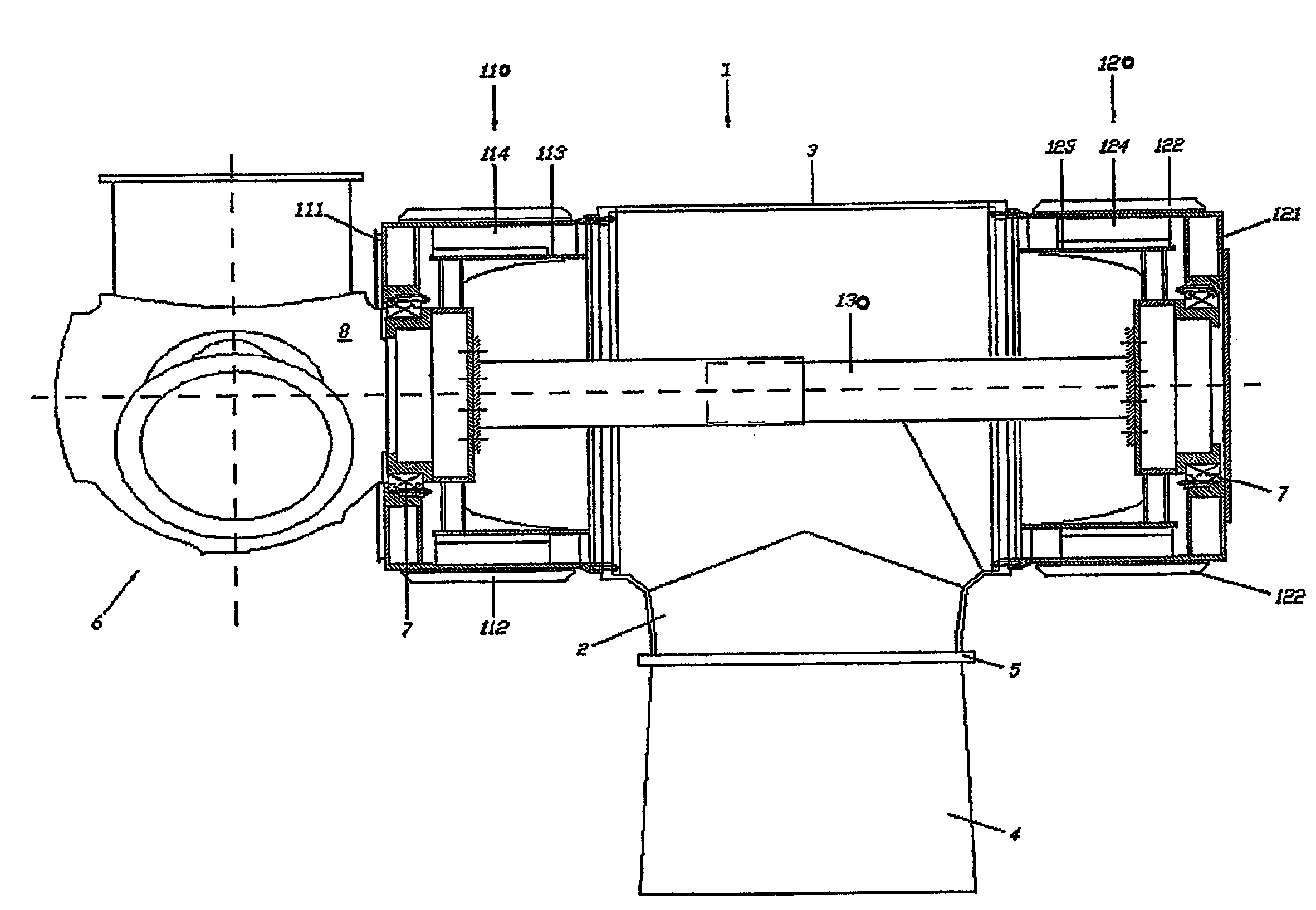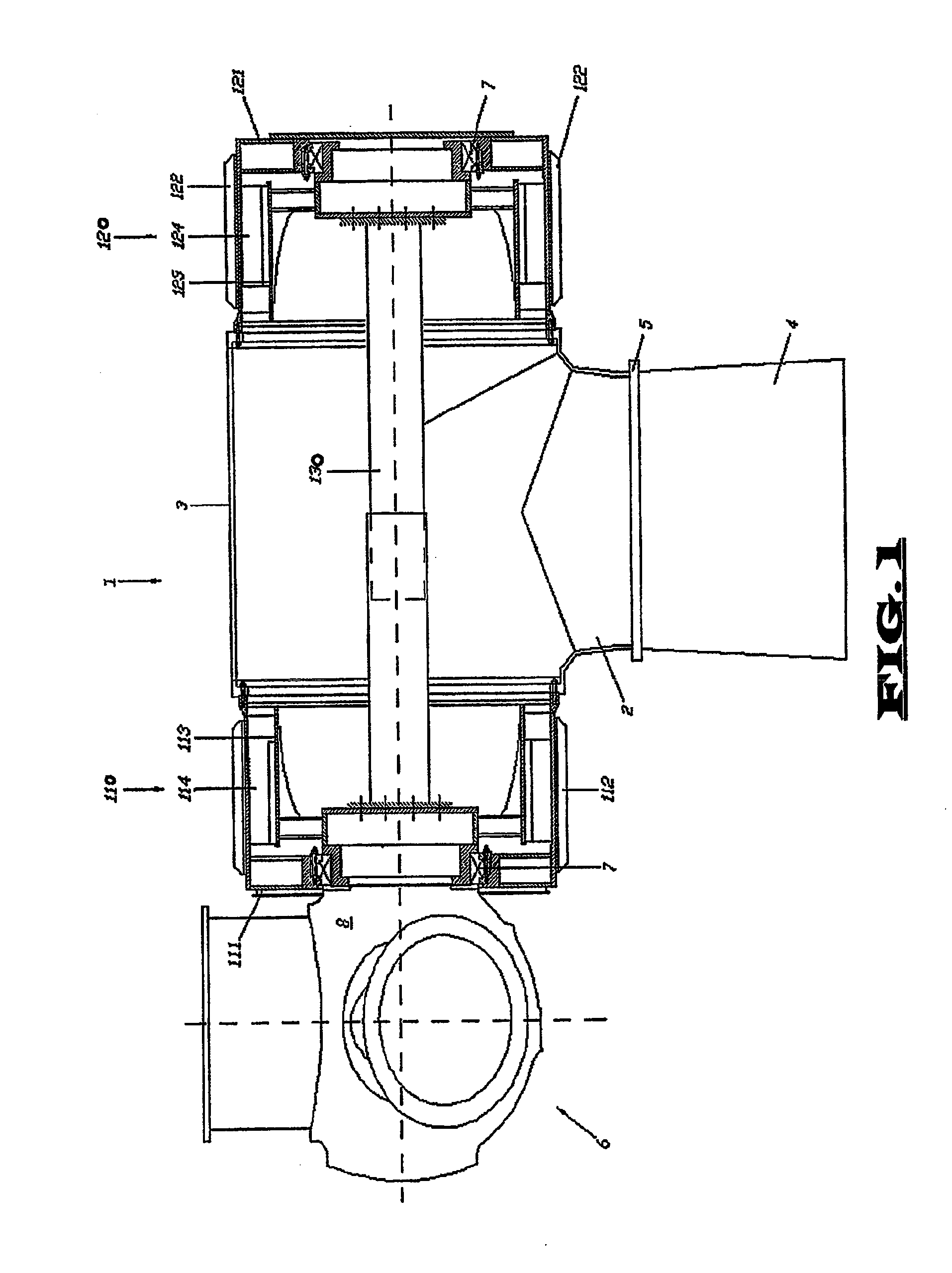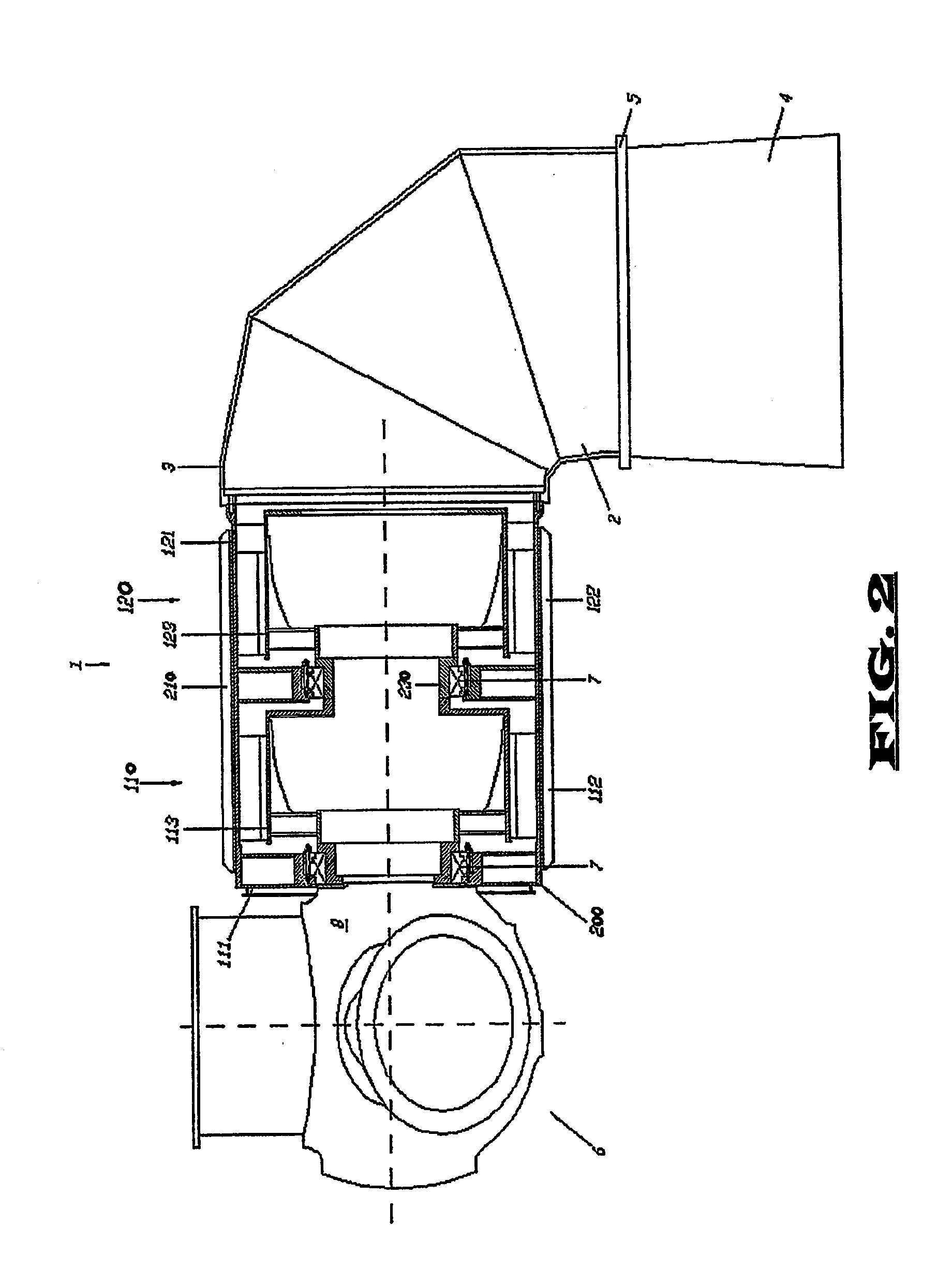[0009]The various embodiments of the present invention avoid the shortcomings of conventional wind power generators by providing a multiple generator wind turbine with a simpler structure, yielding
higher power output for a given turbine diameter while keeping component diameter, weight, length, and cost down. Additionally, embodiments employ a largely hollow construction in which a maximum of ventilation possibilities is available for cooling and / or de-
icing. In addition, embodiments afford a large degree of
accessibility to the various components of the generator while providing a high level of structural stiffness. Embodiments further allow for the use of standard components, particularly in embodiments in which modular arrangements are employed, which can result in easier manufacture,
assembly, and production. By virtue of the mounting of generators on opposite sides of the support structure according to embodiments, optimization of loads on the wind turbine can be realized.
[0017]The largely hollow structure of embodiments provides several advantages over the structures of the prior art. For example, housing electrical and electronic subsystems inside the
nacelle affords excellent protection from
lightning since the structure employs the principle of the
Faraday cage. In addition, because the tubular structure is configured to accommodate the passage of adult humans, it permits easy access to the front portion of the
nacelle and to the hub, which facilitates maintenance and repair work on other subsystems of the
wind power generator. This also allows one to
mount the hub from the inside.
[0018]The substantially hollow structure also facilitates use of the heat given off by equipment, such as
power electronics, housed in the
tower, as well as heat released by the generator itself. The heat can promote the
chimney effect to guide warm air into the hub and from there into and through the rotor blades. The warm air can thus be used as a particularly efficient de-
icing system in cooler times of the year, and provides a
cooling effect for equipment in the generator as cooler air is drawn into and passes through the hollow structure. No
external energy needs to be supplied during operation to heat the rotor blades. Thus, the heat given off by the generator and by the
power electronics themselves is put to use in a simple fashion.
[0019]Additional cooling benefits are derived from the hollow structure since the components that produce heat are moved to the periphery of the generator. More specifically, the generator of embodiments places the windings on the inner periphery of the generator housing. Heat produced by the windings during
electricity generation is easily conducted to the outer surface of the generator. By adding cooling fins on the outer surface according to embodiments, the heat can be transferred from the generator to the air
stream passing over the generator during
electricity production. The cooling fins preferably project transversely from the outer surface and are substantially equally spaced apart. While the fins extend longitudinally along the outer surface, they can also have a sweep or profile that takes into account disturbances in the air
stream introduced by motion of the blades and / or the fins themselves to enhance effectiveness.
[0020]In embodiments, each generator has permanent magnets on an outer body and has windings / coils on an interior body. This yields a
machine having a
stator unit on the inside and a rotor on the outside. The magnets are preferably attached to the inner surface of the rotor in this arrangement, and the windings to the outer surface of the rotor shaft. The advantages of such a solution are a greater specific output, the possibility of using the total heat released by the generator for the de-icing
system, and a simplification of the positioning of the power cables required to conduct the
electric current from the generator to the
tower.
[0021]Preferably, each rotor is supported via a single bearing, preferably of the tapered roller type. The single bearing arrangement provides simplification of the generator mounting structure since only one-side need accommodate a bearing. The single bearing arrangement also eliminates hazardous eddy currents in the generator that form temporary circuits between the stator wall, the rotor wall, and roller bodies of the bearings disposed at the ends of the active portion (windings / coils) of the two bearing arrangement. Further, the single bearing arrangement simplifies adjustment processes of the bearing since the tapered rollers must be pre-stressed; embodiments with two bearings, one at each end of the generator, present design problems with respect to the construction tolerances and
thermal deformation. The single bearing arrangement requires only one
system of seals and
lubrication concentrated in the front region of the generator. And the bearing typology used in the single bearing arrangement offers a high degree of rolling precision since pre-stressing the rollers substantially eliminates play in the bearing, as well as providing a low
rolling resistance that increases generator productivity and efficiency.
 Login to View More
Login to View More  Login to View More
Login to View More 


